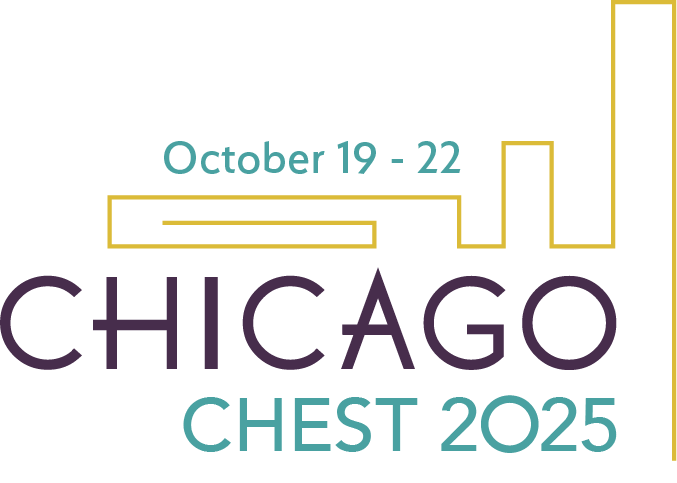CHEST® Pulmonary

Association of Communication With Smoking Attitudes and Behaviors Among Patients Undergoing Lung Cancer Screening
By Christopher G. Slatore, MD, and colleagues
Slatore and colleagues longitudinally evaluated 253 individuals enrolled in lung cancer screening (LCS) programs to assess patient-reported smoking attitudes and behaviors. Participants were surveyed using validated measures for up to one year following imaging with low-dose CT scan within three different health care systems. Only 18% of individuals who smoked at baseline achieved abstinence at 12 months, and fewer than one-third received tobacco cessation resources from clinicians at any point during the screening process. High-quality communication was significantly associated with both positive smoking behavior change (adjusted OR, 2.27; 95% CI, 1.21-4.26) and cigarette abstinence (adjusted OR, 3.63; 95% CI, 1.58-8.34), while screening knowledge and decision-making concordance were not associated with smoking outcomes. The study highlights the need for additional, more intensive interventions for tobacco cessation and perhaps the need for integration of comprehensive cessation support within LCS programs.
Commentary by Saadia A. Faiz, MD, FCCP, Member of the CHEST Physician Editorial Board
CHEST® Critical Care
Identification of Acute Respiratory Failure Phenotypes With Electronic Health Record Data
By Charles R. Terry, MD, MSCR, and colleagues
There is growing interest in identifying ARDS subphenotypes that may respond differently to treatment. However, ARDS often goes unrecognized and underdiagnosed, hindering appropriate management. Some studies have identified distinct phenotypes among patients with ARDS and patients with non-ARDS ventilator-dependent respiratory failure (VDRF). This study combines those populations to explore broader VDRF subphenotypes. Using electronic health record data, the authors applied unsupervised machine learning (K-means clustering) to identify high-acuity and low-acuity subphenotypes based on clinical data 24 and 48 hours postintubation. The high-acuity group had a greater proportion of ARDS (38% vs 19%) and sepsis (57% vs 20%) compared with the low-acuity group. Interestingly, the driving pressures were higher in the high-acuity group relative to the low-acuity group. While it’s unclear if this aligns with the “hyperinflammatory” group previously described by other authors, the use of routine clinical data instead of biomarkers makes the findings more applicable to daily practice. Further research is needed to determine whether these subphenotypes are clinically meaningful in guiding therapy.
Commentary by Sreelatha Naik, MD, FCCP, Member of the CHEST Physician Editorial Board, and Ayla Karca, MD
Journal CHEST®

Oxygen Saturation Targets and Neurologic Outcomes Following Cardiac Arrest: A Secondary Analysis of the Pragmatic Investigation of Optimal Oxygen Targets Trial
By Stephanie C. DeMasi, MD, and colleagues
The study by DeMasi and colleagues provides important evidence to inform a long-debated aspect of post-cardiac arrest care: the optimal oxygen saturation (SpO₂) target following resuscitation. In this secondary analysis of the Pragmatic Investigation of Optimal Oxygen Targets (PILOT) trial, the authors found that patients who were mechanically ventilated and managed with lower or intermediate SpO₂ targets (SpO₂, 88% to 96%) demonstrated a higher incidence of favorable neurologic outcomes compared with those treated with higher targets (SpO₂, 96% to 100%).
This work adds meaningful clarity to an area characterized by conflicting data. While earlier studies have yielded mixed findings regarding conservative oxygen strategies, the present analysis stands out for its high-resolution, granular, physiologic data and inclusion of both in-hospital and out-of-hospital cardiac arrests. The observed association between lower oxygen exposure and improved neurologic outcomes reinforces the concern that hyperoxemia may exacerbate cerebral injury through vasoconstriction and oxidative stress.
The authors appropriately note the inherent limitations of a single-center, secondary analysis and the need for larger, dedicated, randomized trials. Nonetheless, their findings challenge the historical bias toward liberal oxygen administration after cardiac arrest and lend support to a more measured, physiologic approach to oxygen titration. This study advances the conversation toward evidence-based, precision oxygen therapy in postresuscitation care—a direction likely to influence both bedside practice and future guideline development.
Commentary by Timothy J. Kinsey, DMSc, PA-C, FCCP, Member of the CHEST Physician Editorial Board

